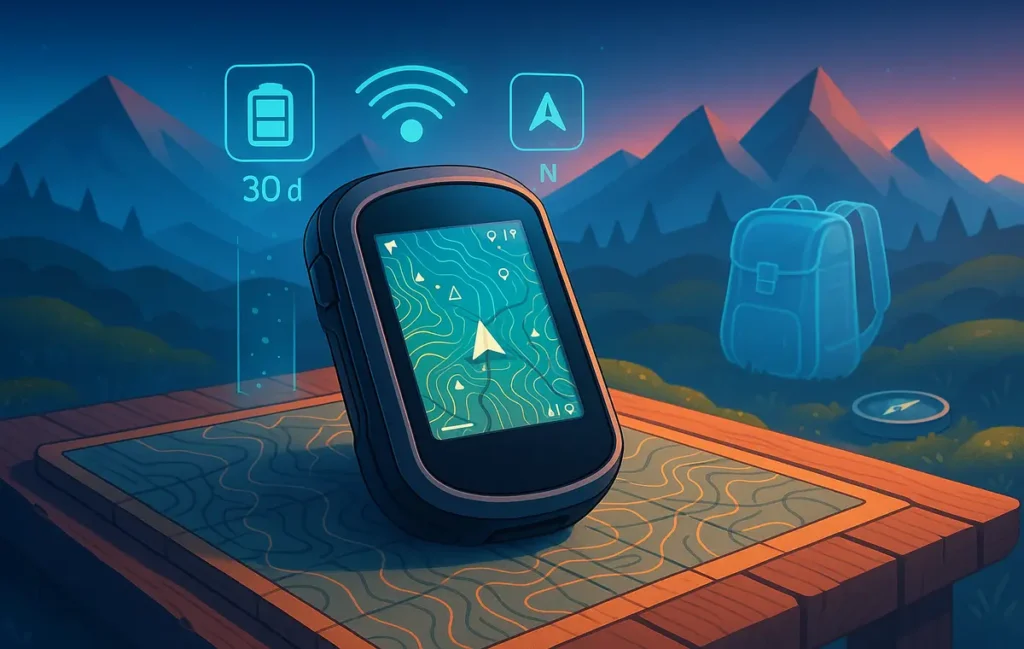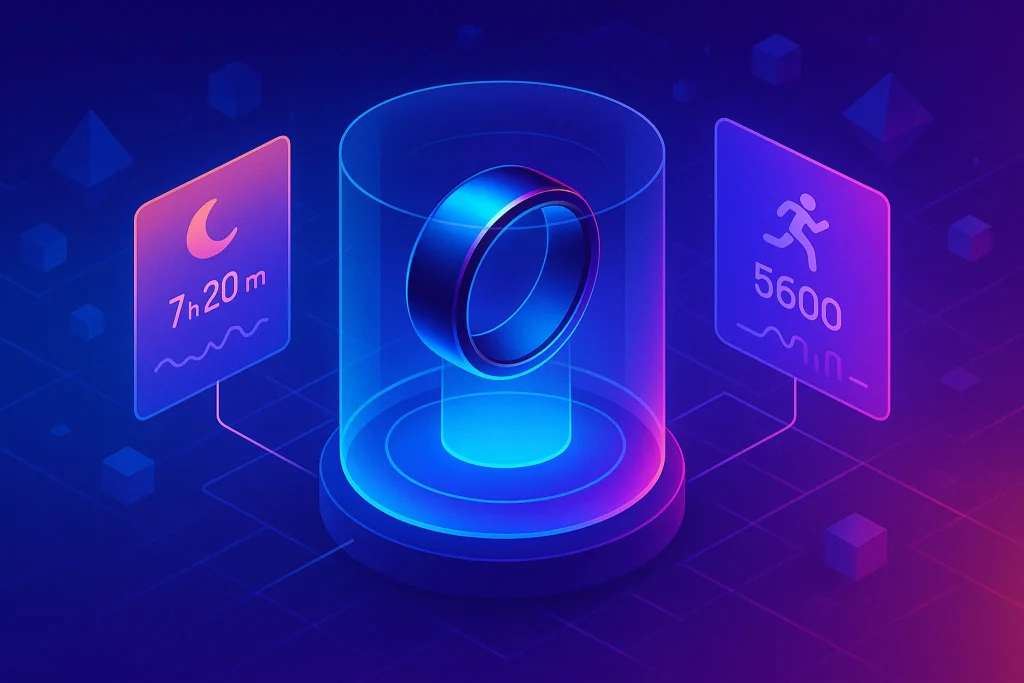🎯 Intro
Imagine trekking through remote trails, your phone long dead, and yet your navigation tool keeps guiding you for weeks without a recharge. That’s exactly the scenario Garmin designed the new eTrex Touch for—a rugged GPS handheld with a bright color touchscreen, topo maps, and battery life that rivals the length of entire expeditions.
For years, Garmin has dominated the outdoor GPS handheld space with its eTrex and Fenix series. Now, the eTrex Touch aims to set a new standard for adventurers who need reliability, accuracy, and endurance in one device. At NerdChips, we break down what makes this release important, how it compares with Garmin’s other offerings, and why a handheld GPS still matters in a smartphone world.
🚀 What We Know About the Garmin eTrex Touch
The Garmin eTrex Touch is a handheld GPS navigator built for hikers, campers, hunters, and explorers who rely on durable tools outdoors. Priced at $449.99, it offers a touchscreen interface on a compact body that fits comfortably in one hand or can be mounted on gear.
Preloaded with TopoActive maps, the device also supports Garmin’s subscription-based Outdoor Maps+, unlocking advanced data like high-resolution satellite imagery, elevation contours, land boundaries, and even wildlife areas. For anyone planning serious backcountry routes, these maps reduce the need to juggle multiple apps or paper charts.
In essence, the eTrex Touch positions itself as the rugged cousin to your smartphone GPS—less flashy, but vastly more reliable in places where cellular signals disappear.
💡 Nerd Tip: A smartphone GPS drains in hours. A handheld GPS like the eTrex Touch is designed for days or weeks of autonomy.
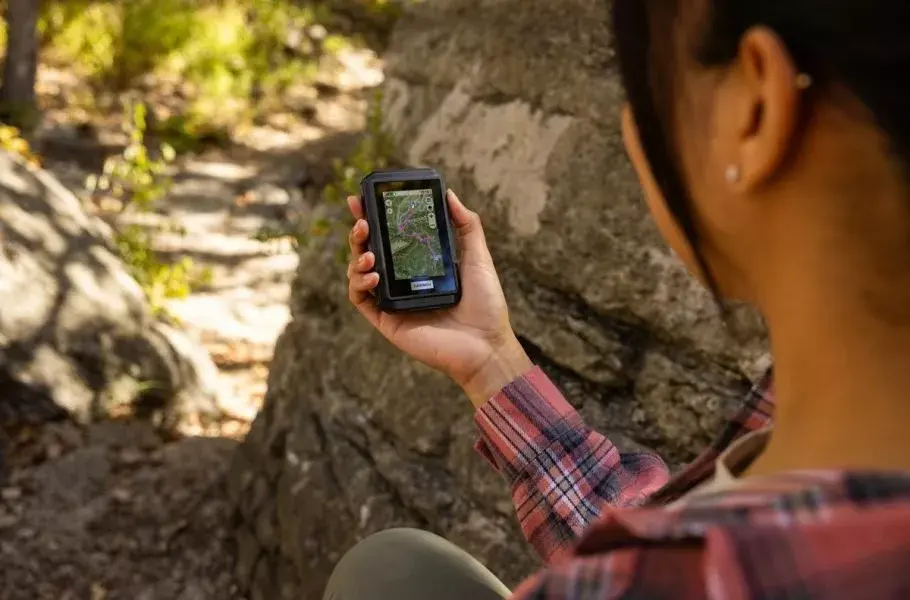
🔋 Battery Life That Redefines Endurance
Battery life is the headline feature. In standard GPS mode, the eTrex Touch lasts up to 130 hours—already enough for multi-day treks. Switch to Expedition mode, and runtime stretches to an extraordinary 650 hours, nearly a full month of continuous navigation.
Few handheld GPS devices even come close. For comparison, many smartwatches like the Apple Watch Ultra 2 offer only 36–60 hours in GPS mode. Even Garmin’s own Fenix 8 Pro, while feature-rich, doesn’t rival the sheer longevity of the eTrex Touch in standby navigation.
To push the battery further, users can reduce screen brightness, shorten backlight timeouts, or enable battery saver profiles. For expeditions in remote regions, that flexibility means the difference between reaching your destination or navigating blind.
💡 Nerd Tip: Don’t just rely on factory settings. Small tweaks like reducing backlight timeouts can extend battery life by 10–15%.
📱 Display & Build Quality
The 3-inch color touchscreen allows for smooth zooming and swiping through maps, a big leap from older button-only eTrex models. While not as large or bright as smartphone displays, it strikes a balance between usability and endurance.
Durability is where the eTrex Touch shines. Built to IP67 standards, it resists dust and water, while its rugged design meets MIL-STD-810 military-grade toughness. Drops, rain, mud, and snow are not deal-breakers here—it’s engineered for abuse in environments where smartphones usually fail.
This philosophy echoes across Garmin’s lineup. Where phones or tablets falter outdoors due to fragility and poor endurance, dedicated GPS handhelds survive and thrive.
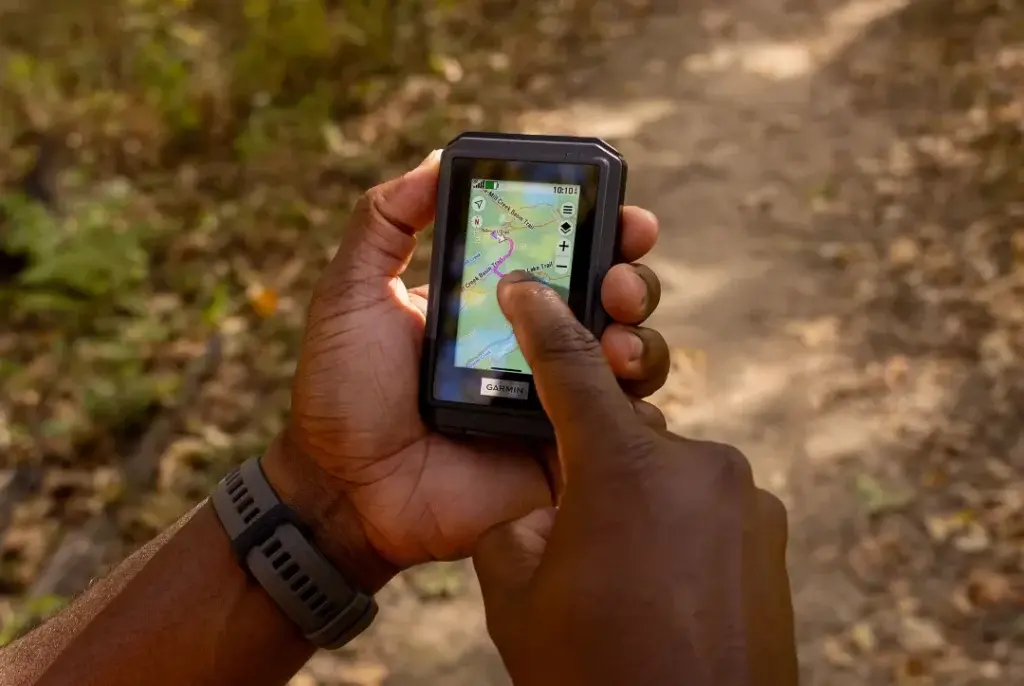
The eTrex Touch leverages multi-band GPS positioning for greater accuracy, especially in areas with dense canopy or steep cliffs where signals often degrade. It also supports GPS + GLONASS, giving it access to multiple satellite constellations.
The trade-off: enabling multiple systems increases accuracy but consumes more power. That’s why many explorers toggle GLONASS only when necessary. For backcountry hiking, the accuracy gains often outweigh the slight battery hit.
Compared to smartphone GPS chips, which often rely on fewer signals and weaker antennas, the eTrex Touch consistently outperforms in challenging terrains.
🗺️ Maps & Outdoor Data
Preloaded TopoActive maps give immediate utility for hiking trails, waterways, and landmarks. However, Garmin knows explorers crave more. With the Outdoor Maps+ subscription, users unlock:
-
High-resolution satellite imagery
-
Elevation and terrain models
-
Public and private land boundaries
-
Wildlife management areas
This expansion transforms the eTrex Touch from a basic navigator into a comprehensive field tool. Hunters, climbers, and long-distance trekkers benefit from richer layers of environmental data.
When compared to digital companions like the Best E-Readers for Reading Outdoors, the difference is clear: one is for consuming information, the other is for survival-level navigation in unpredictable conditions.
⚖️ Where It Stands vs Other Garmin Devices
Garmin already has premium wearables like the Fenix 8 Pro and rugged multisport devices like the Apple Watch Ultra 2 challenger. But those devices balance fitness, lifestyle, and navigation. The eTrex Touch strips away distractions—it is purpose-built for navigation first.
For explorers who want pure GPS reliability, no smartwatch notifications, and month-long runtime, the eTrex Touch makes more sense. For casual hikers who only need occasional tracking, a smartwatch may suffice. The decision depends on whether navigation is your core need or just a bonus feature.
💡 Nerd Tip: Don’t think of the eTrex Touch as “less smart” than a watch—it’s “more focused” on doing one thing exceptionally well.
📈 Real ROI for Explorers
A $449.99 device might sound steep until you consider what it replaces: backup power banks, extra phones, or paper map systems. For multi-week expeditions, the eTrex Touch pays back in security and reliability.
The ROI for explorers is measured in outcomes like:
-
Reduced risk of navigation failure
-
Confidence during long expeditions
-
Lower dependency on fragile smartphone batteries
For professionals—wildlife researchers, surveyors, or rescue teams—the ROI is even clearer. A reliable handheld GPS is an operational requirement, not a luxury.
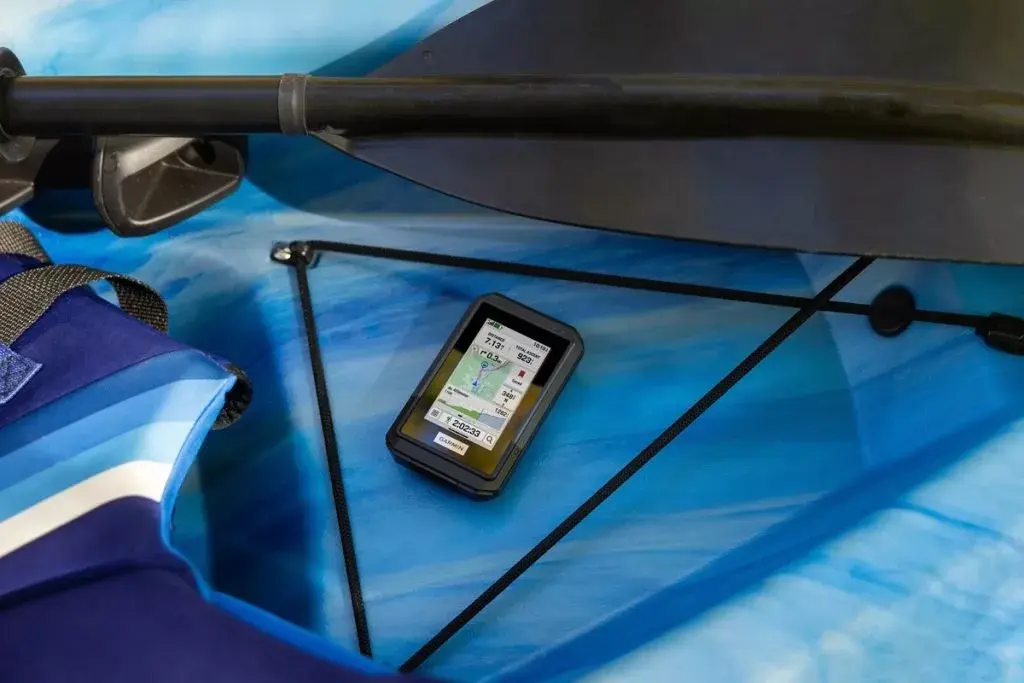
🚀 Implementation Guide
Step 1: Plan Your Adventure. Identify your trip length and decide if you need Expedition mode or standard GPS.
Step 2: Configure Maps. Preload TopoActive maps and, if subscribed, Outdoor Maps+ layers.
Step 3: Optimize Battery. Adjust screen brightness, backlight duration, and map redraw intervals before departure.
Step 4: Field Test. Run a short trip first to understand real-world endurance and map usability.
Step 5: Scale Up. For longer expeditions, combine the device with solar chargers or backup batteries for peace of mind.
⚠️ Challenges & Solutions
Like any device, the eTrex Touch isn’t flawless. Its screen size may feel small compared to smartphones, making detailed map reading slower. Solution: use zoom intelligently and rely on Outdoor Maps+ for high-resolution detail.
Another challenge is cost. At $449.99, it competes with entry-level smartphones. The solution lies in recognizing use cases: if you’re a city user, skip it. If you’re a backcountry explorer, it’s priceless.
Finally, device ecosystem lock-in can be a hurdle. Garmin thrives on subscriptions and map add-ons. To avoid overspending, assess which maps you truly need before committing.
⚡ Ready to Explore Smarter?
Take your adventures further with GPS devices like the Garmin eTrex Touch. Pair it with AI-powered tools, outdoor maps, and rugged accessories for seamless exploration.
⚖️ How It Compares to Other Devices
The Garmin eTrex Touch doesn’t exist in a vacuum. Many outdoor enthusiasts weigh it against premium multisport wearables like the Garmin Fenix 8 Pro or even rugged smartwatches such as the Apple Watch Ultra 2. The difference lies in purpose. The Fenix 8 Pro is a hybrid—fitness tracking, lifestyle features, and navigation packed into one wrist device. The Apple Watch Ultra 2 is great for athletes who also want apps, notifications, and daily smart functions.
But the eTrex Touch is a navigation-first device. It strips away lifestyle distractions to focus on one mission: keep you found in the wilderness for as long as possible. Where the Fenix might give you days of battery and the Apple Watch Ultra 2 stretches to 60 hours, the eTrex Touch runs for weeks. For expedition-level adventurers, this singular focus is invaluable.
💡 Nerd Tip: If your priority is fitness + smartwatch functions, pick a wearable. If your priority is not getting lost, the eTrex Touch is in a league of its own.
👤 Who Is It For? Real-World Scenarios
To understand why the eTrex Touch matters, it helps to imagine who it’s built for:
-
The Long-Distance Trekker. Picture a mountaineer spending two weeks on trails in Patagonia. With no access to outlets, their only safe bet is a device that can last for the full trip without a charge.
-
The Family Camper. A parent leading kids into the wilderness needs simple, reliable navigation without worrying about draining their phone. A rugged, preloaded GPS means peace of mind.
-
The Researcher or Hunter. In regions where connectivity is nonexistent, reliable topo maps and satellite imagery are non-negotiable. The eTrex Touch ensures missions don’t end because of dead batteries.
By designing around these personas, Garmin made it clear: this device is not for casual city hikes but for people whose adventures push beyond the edges of phone coverage.
🔗 Ecosystem & Connectivity
Garmin doesn’t just sell standalone devices—it builds ecosystems. The eTrex Touch can integrate with Garmin’s mapping services, Outdoor Maps+, and even share data with your smartphone when needed. Syncing routes or waypoints before heading out allows you to plan on a big screen and carry those plans in the field.
If you already own Garmin devices like a smartwatch or bike computer, the eTrex Touch complements them by offloading navigation to a specialist tool. While your Fenix or Edge device may handle day trips, the eTrex becomes the long-haul fallback. This layered redundancy is one of Garmin’s strategic advantages over relying solely on a smartphone.
🔮 Future of Handheld GPS
With smartphones growing more powerful and satellite internet services like Starlink Mobile expanding, many wonder if dedicated handheld GPS units have a future. At NerdChips, our verdict is yes.
Smartphones remain fragile, power-hungry, and signal-dependent. Even if Starlink expands, carrying a dish or ensuring coverage in dense forests or canyons is impractical for now. Handheld GPS devices like the eTrex Touch will continue to thrive in niches where durability, offline accuracy, and endurance are the top priorities.
That said, the future will likely bring hybrid devices: GPS handhelds with satellite connectivity and AI-driven mapping. Garmin’s play with Outdoor Maps+ already hints at this direction, where the line between offline and online navigation blurs.
🔋 Pro Tips for Battery Management in the Wild
Even with 650 hours of potential runtime, smart usage can stretch performance further. Seasoned explorers recommend a few key practices:
-
Disable GLONASS unless needed. Multi-constellation tracking improves accuracy but drains more power. Use it only in difficult environments.
-
Use Expedition Mode. This drastically reduces refresh rates while keeping core navigation active.
-
Control Backlight Aggressively. Keep the screen dim and set short auto-off timers.
-
Mind the Temperature. Cold drains lithium batteries faster. Keep the unit close to your body in freezing conditions.
-
Carry a Solar Charger for Backup. While not strictly necessary, pairing solar with the eTrex ensures virtually unlimited operation on long treks.
💡 Nerd Tip: Treat the eTrex Touch like a survival tool, not a smartphone. Minimalist settings can easily double real-world endurance.
📬 Want More Smart Outdoor Tech Insights?
Join our free newsletter for weekly guides on GPS tools, wearables, and smart outdoor gadgets—delivered straight to your inbox. No fluff. Just practical insights for explorers and creators.
🔐 100% privacy. No noise. Just value-packed outdoor tech insights from NerdChips.
🧠 Nerd Verdict
The Garmin eTrex Touch is a specialist tool—not a smartwatch, not a smartphone, but a survival-grade GPS device with unmatched endurance. It shines in long expeditions, extreme environments, and professional use cases where reliability trumps convenience.
For casual users, a smartphone or smartwatch may suffice. But for those who live at the edges of civilization, this device is not just worth it—it’s essential. NerdChips sees the eTrex Touch as Garmin doubling down on its roots: tools built for explorers who demand confidence, not compromise.
❓ FAQ: Nerds Ask, We Answer
💬 Would You Bite?
Would you invest in a $449 GPS handheld with a month-long battery for peace of mind outdoors—
or rely on your smartphone and hope for the best?
Crafted by NerdChips for explorers who trust their tech as much as their compass.

